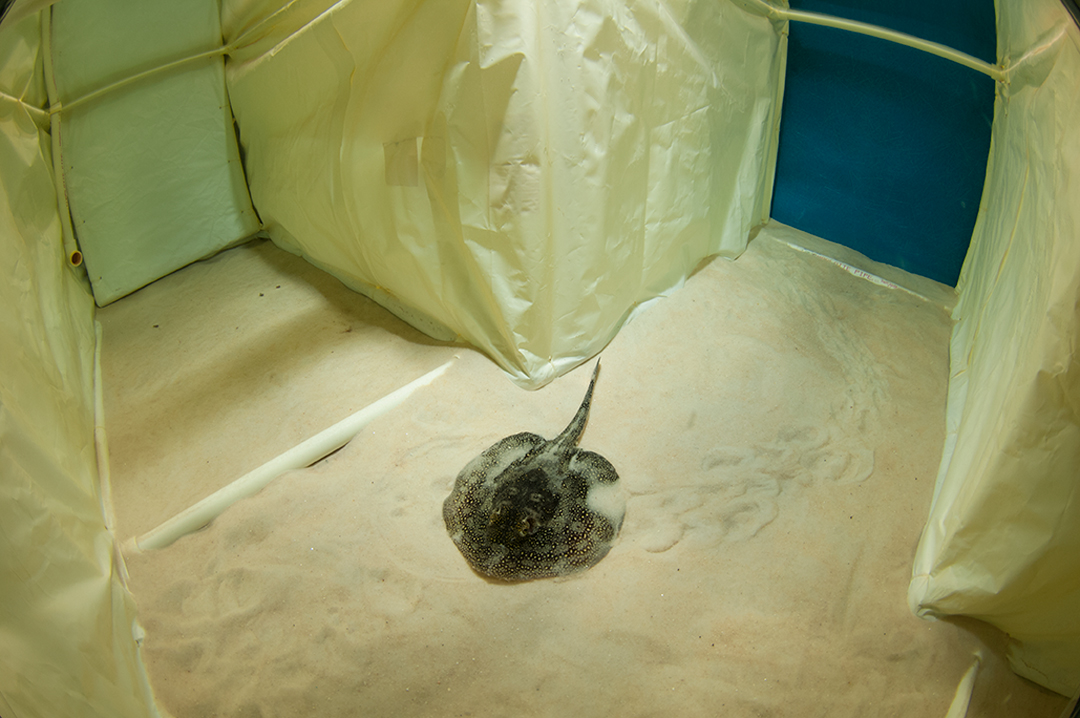Rays in a T-maze

Photo © Kyle Newton
The following experiments are designed to understand if stingrays could use geomagnetic field polarity, or the difference between the north and south poles, as a directional cue to solve a maze task. Compasses use the polarity of the geomagnetic field to indicate direction so that one can maintain a proper heading. Stingrays were placed into a T-maze and at the intersection the north and south poles of the ambient magnetic field could be shifted to the right or left. Subjects were then trained to associate either the north or south pole with the location of a food reward. Over time the rays could reliably use the polarity of the magnetic field to choose the correct maze location. These data indicate that stingrays and sharks can use the north and south poles of a magnetic field to orient themselves in a desired orientation to reach a goal.

Photo © Kyle Newton

Photo © Kyle Newton
I then reverse trained the stingrays to associate the previously unrewarded opposite pole of the geomagnetic field with food. In other words, animals that were initially trained to use north to find food were trained to use the south pole, and vice versa. I found that all stingrays learned the new conditioning paradigm faster than during the previous procedure. These results, when combined with the results of other learning protocols, indicate that stingrays, and perhaps sharks, can classify sensory stimuli into categories and display flexibility in their behavioral response to learning new tasks.
